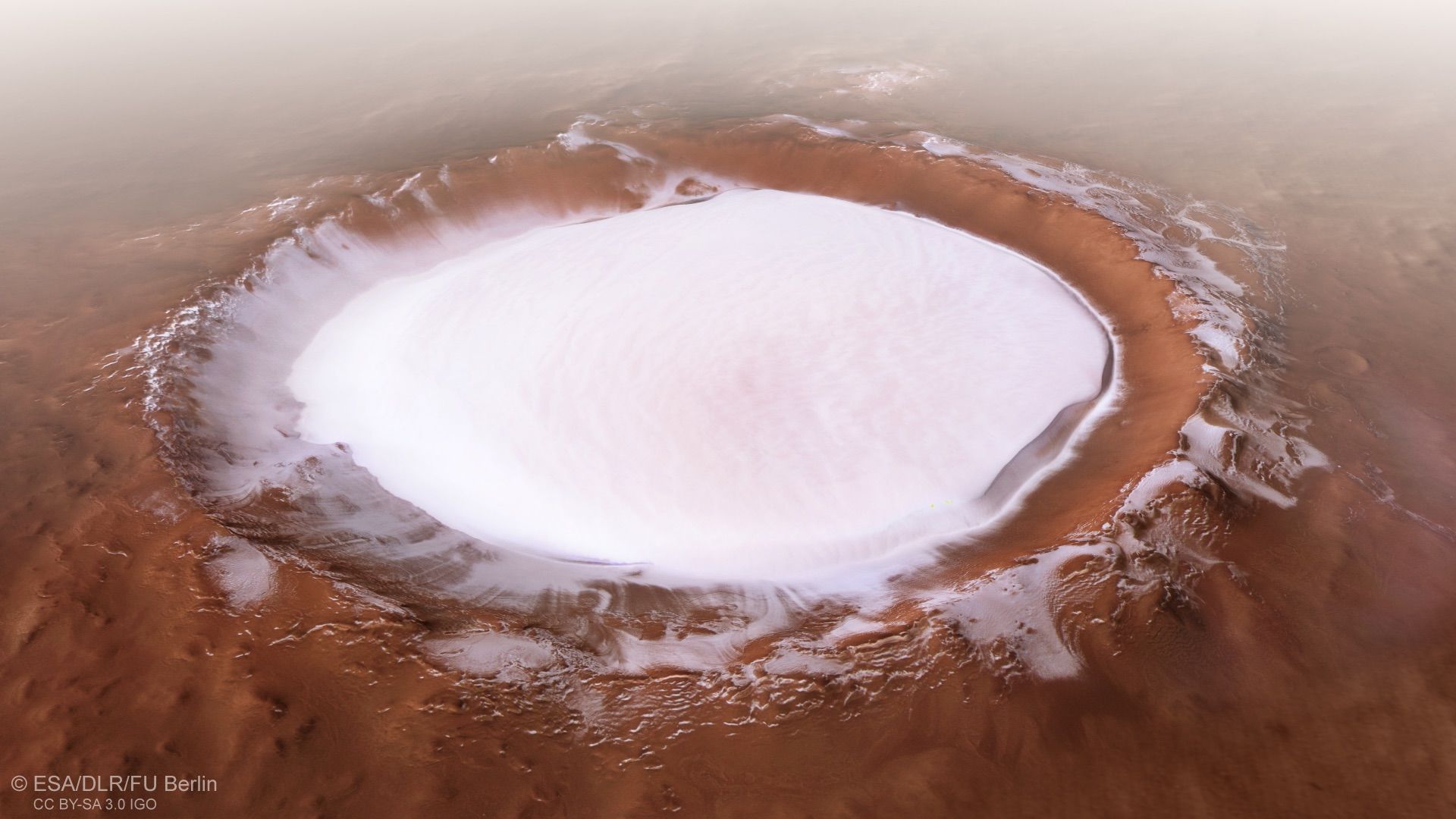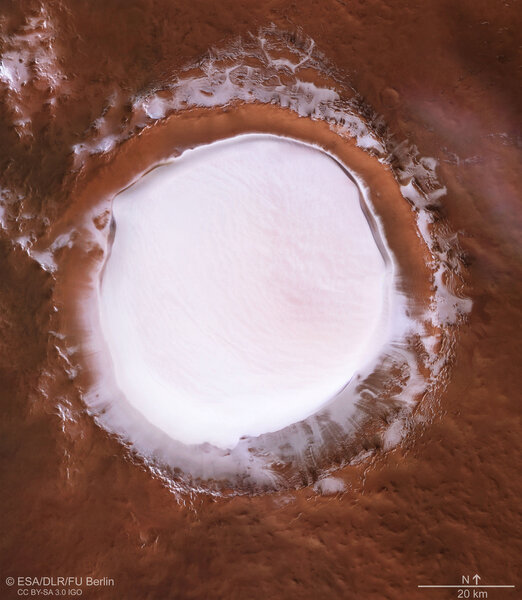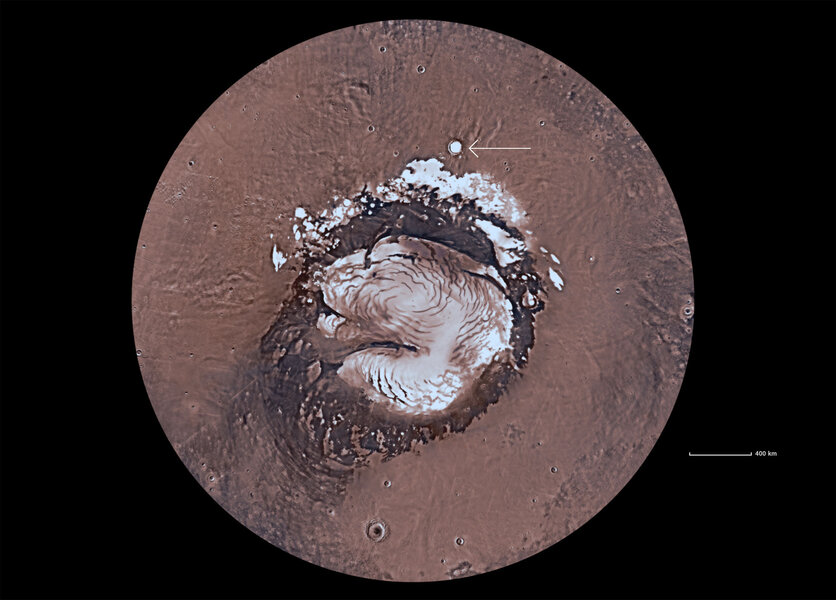Create a free profile to get unlimited access to exclusive videos, sweepstakes, and more!
A White Christmas for the Red Planet

Did you know Mars has seasons similar to Earth's? The reason we have seasons is that the Earth is tilted; its rotation axis is tipped with respect to its orbit (what we call the obliquity) by about 23.5°. Mars is tipped by about 25°, so it has seasons pretty much like we do.
But then, Mars's orbit is almost twice as long as ours, so its seasons are almost twice as long, too. If you like winter, then Mars is the place for you. Bonus: It's farther from the Sun, so it gets colder! And if you live near its poles, why then you can have winter all year 'round.
And if you like ice skating, Mars provides there, too. How about a skating rink over 80 kilometers across?
That's Korolev, a huge impact crater on Mars. It's located at about 73° north latitude, so not too far from the planet's northern ice cap, where it's so cold and the Sun so low in the sky that ice covers the crater 687 days a year. The crater floor is about 2 km deep (compared to the surrounding area, called Planum Boreum, or "Northern Plain"), but the ice forms a mound in the middle that reaches nearly 2 km high, almost back to the plain. The rim of the crater sticks up another 2 km still in some places.
If you want to ice-skate there, I suggest starting at the mound top and being prepared to brake hard when you get to the bottom.
That ice, by the way, is nearly pure water ice! There's a lot of it there, perhaps as much as 2,000 cubic kilometers. If it weren't so far north it might make a nice resource for future human bases… and future hipster astronauts will love it, since the ice appears to have been deposited locally, and isn't just the remnants of glacial retreat. Sometimes, as glaciers retreat over an area, they leave behind ice in local depressions, but in this case it looks more like that ice built up over time by periodic deposits — much of that area got its ice that way. And it's happened recently, too… at least, in the past few million years. Recent enough, for Mars.
The image of the crater was taken by the European Space Agency's Mars Express orbiter, which launched in 2003 and slid into Mars orbit on December 25: exactly 15 years ago today!
What a fitting tribute for this anniversary on this particular day; a celebration of winter, a gorgeous peek into a huge repository of water, and, of course, a chance to see that on Mars, every Christmas is a white Christmas. Even if it's tinged with red.




























